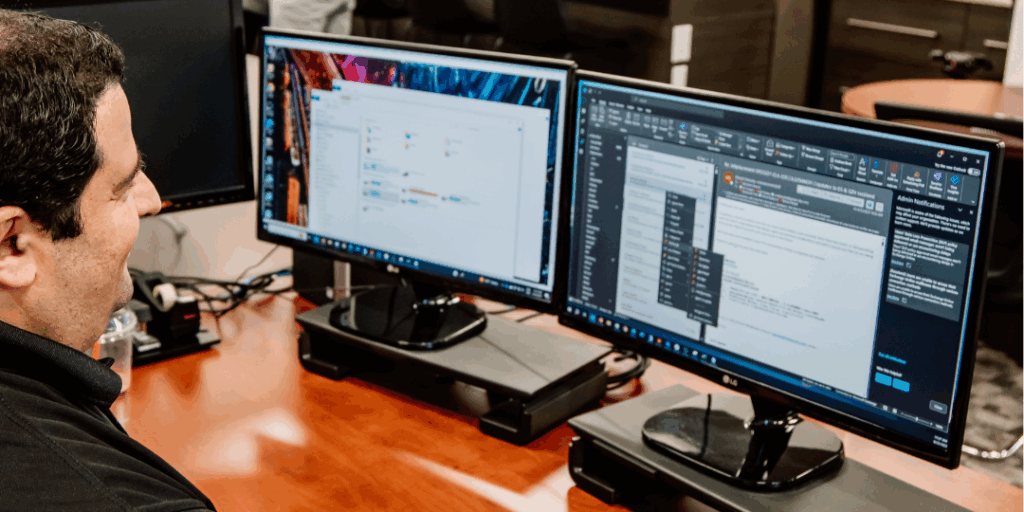
Given the immediate dissemination on a global scale of information, products and services, software, as is the case with most of today’s technology, can be deployed simultaneously in multiple geographies at release time. In order for end users to fully take advantage of an application’s features and benefits, making the software available in the languages of those end users is highly suggested. Software localization is the process of adapting application software into various languages, regional preferences, and technical requirements of a target locale. Localized software allows users to work more efficiently in the language they know best, and to enjoy an engaging experience by using a product with a native feel.
There are two equally critical components involved in software localization: the linguistic component and the technology component. Professional software localization addresses both aspects in order to ensure that the final deliverable is a product that developers are anxious to share with their target audiences around the world.
Software Localization: what’s important to know
Software localization is not merely a sophisticated synonym for software translation. Rather, software localization addresses both: 1) natural language translation as well as 2) localization of the complete User eXperience (UX). It results in a product that enables a user to work in his/her native language, along with local cultural references region-specific functionality.
Software localization is not a trivial task. Working with a company that offers a turnkey solution – such as Interpro – will streamline the process. Your organization may not be familiar with all the nuances involved, so let’s discuss five must-know factors that will have you feeling confident about the software localization process.
1. Expertise offers flexibility
Professional software localization companies grow their expertise over the years. That knowledge and skill-set extend into the technology. In today’s digital age, it is vital to have a thorough understanding of current programming languages and the platforms they run on. By cultivating this knowledge, professional teams are able to provide their clients with software localization services for an extensive range of programming languages and file types, functioning on a multitude of operating system environments. That means that your software can be web-based, desktop, mainframe/mid-range, or mobile.
Additionally, localization professionals know that the terminology deployed in the user interface (UI), Online Help system, and online and printed support materials must all be consistent in order for the application to be used effectively. After an in-depth review of the literals comprising the UI, a glossary is created based on key terminology. This glossary offers continuity across all product components, crucial in avoiding confusion or even user error due to inconsistencies.
2. Context truly is king
We are often told that content is king. No matter how regal the content is, without context, translating words in a vacuum can result in a meaningless concept, or even worse – just flat out wrong translation. Without supporting context, the translation may even prove to be offensive to the user.
Lack of context is often the result of the limited amount of space available for literals on a UI screen or panel and makes for one of the supreme challenges inherent in software localization. Indeed, it is not uncommon for literals to consist of one or a few letters. “OT”, for example, can be either “Overtime” or “On Time”, depending on the context. When context is lacking, so may be the translation. Software localization professionals are accustomed to working with this kind of limitation and can utilize their experience to handle this problem.
3. One size does not fit all
Working with a company having a software localization practice, such as Interpro, offers another key benefit. Decades of experience combined with our personalized approach to providing a better localization experience, we can adjust our approach to fit any client situation. Whatever the development methodology your organization has adopted, be it waterfall, agile, or something in between, we can accommodate you.

Being able to adapt has numerous benefits. When software updates are released to global markets, we keep up to match your pace and your delivery requirements. We understand cycles and sprints, and boast a skilled localization organization to optimize the process workflow. This flexible environment along with our Client-First emphasis allow you to stay on track with your business goals and objectives.
4. Quality Assurance is key
Your software application is a global product. Rather than delivering components on a piecemeal basis, you need to ensure that your product launches are in sync with your business plan. That means that you need to deliver quality, and you need to deliver it fast. Professional software localization delivers on both fronts.
Quality Assurance (QA) is essential. Although each phase of the software localization process (e.g. glossary development, translation, editing, proofreading) has built-in quality controls, a final assessment of the localized product gives us an opportunity to uncover and address any remaining issues that may have somehow slipped through the cracks.
What are we looking for when we QA a localized software UI? Some of these areas include verifying that:
- each literal and system message have been translated accurately and consistently,
- the length of on-screen content has not been exceeded, and
- graphical images, color choices, symbols and layout are culturally appropriate.
Overall, the quality assurance phase in a software localization process ensures that the final product reflects the look and feel of the source language application, while being adapted for the target locale.
5. Validate functionality
Software validation is without a doubt the most important component in the software localization process, especially for a first-time localization project. What good is a perfect translation if the functionality of the localized product does not mirror that of the source application? As part of the localization process, software validation ensures that, in the target language application, application functionality is identical to the source language functionality.
During software validation, a software localization specialist who is a native speaker of the target language tests product functionality using a client-provided test script and test data. Results are shared with the software developer, and any anomalies are isolated, resolved, and retested until fixed.
The benefits of a well-executed validation should be considered as when a bug or an inconsistency is detected, it is addressed and resolved before product launch, saving time and money, and most importantly, preventing damage to your brand.
Software Localization ROI
Your organization has most likely spent significant resources developing, marketing, and supporting your software application. Localizing your product, when done correctly, allows you to increase revenue, market share, and user satisfaction by providing a product that is relevant in multiple geographies.
Category: Localization
Tags: Software Localization, Software Translation, UI, UI localization, UI translation
Service: Software Translation
Industry: Software
Don't forget to share this post!
Stay Updated with Interpro
Subscribe to our newsletter for the latest updates and insights in translation and localization.





